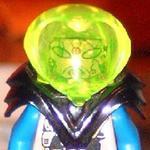MRF filter creation tool
-
Similar Content
-
- 0 answers
- 6315 views
-
- 1 reply
- 7508 views
-
- 0 answers
- 1718 views
-
- 0 replies
- 52347 views
-
- 0 answers
- 803 views
-
-
Recently Browsing 0 members
- No registered users viewing this page.



Recommended Posts
Create an account or sign in to comment
You need to be a member in order to leave a comment
Create an account
Sign up for a new account in our community. It's easy!
Register a new accountSign in
Already have an account? Sign in here.
Sign In Now